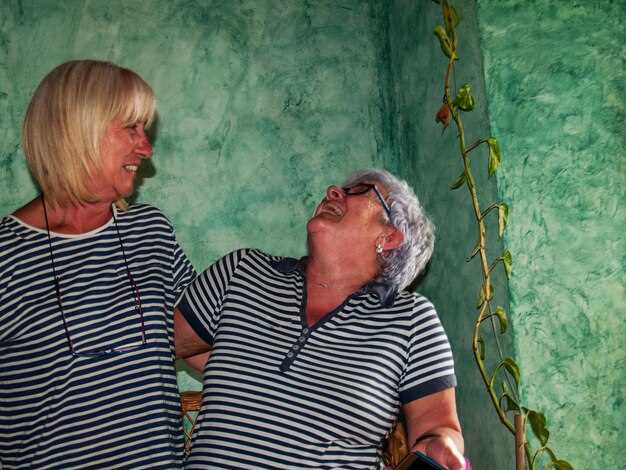Specific targets: three in-person contacts per week, two 20-minute calls, screen time under two hours nightly; log each contact in a simple spreadsheet with date, duration, perceived quality. Aim for a 30% increase in face-to-face minutes within 60 days; reassess after 90 days. Use measurable checkpoints instead of vague intentions.
Communication protocol: when writing first messages keep length between 60–120 characters, open with a targeted observation about a profile item; sample opener: “Noticed your trail running photos, curious which local route you prefer.” Swap passive scrolling for one deliberate message per day; if you couldnt sustain threads after you’ve dated before, use a three-step script: curiosity question, two-line personal detail, closed invitation to meet. Replace long texting with scheduled phone check-ins to build momentum.
Case notes from practice: mike, 34, living in london, seemed isolated after promotion at work; longer hours increased income, not happiness. Coach mandli advised partnering efforts focused on shared activities rather than app matching; within six weeks mike reported feeling happier, less disappointed by surface exchanges, more present during weekend meetups. Metrics used: number of meaningful conversations per week, proportion of invites accepted by them, self-rated mood daily on a 1–10 scale.
Workplace strategy: treat social time as a promotion-worthy investment; negotiate one late afternoon per week blocked for social plans following a major project milestone. Small changes yield measurable shifts–fewer missed gatherings, longer phone conversations, higher self-reported happiness after three months. Recruit two peers for mutual accountability; rotate hosting duties to reduce burden.
Population note for planners: targeted outreach yields higher engagement than generic campaigns; americans survey workgroups show participation gaps where offers were untargeted. For practical rollout use local meetup lists, hobby clubs, volunteer shifts with defined roles; collect simple baseline data, run a 12-week pilot, compare engagement rates across parts of the program. Prioritize quick wins that make people feel valued, usable steps that lead to being happier rather than vague promises.
Recognizing loneliness: practical signs in daily routines and mood
Set a 9pm screen cutoff: limit passive browsing; mute social feeds; avoid porn before bed; replace two weeknights with 30-minute voice calls to friends, track nights with a sleep app to confirm 7–8 hours; thus reduce nighttime rumination.
Measure routine contacts: if you go three days without someone to speak with, if saturday plans are routinely canceled, if working hours consume most long days, if frequent moving or unpartnered housing disrupts local connections, these signals point to shrinking social networks; national surveys often report 30–40% of americans saying they lack close confidants.
Mood markers with thresholds: persistent disappointment for more than two weeks; loss of interest in things once pleasurable for over ten days; difficulty to figure what to say when meeting a girl; refusal to speak straight about needs often prolongs isolation; targeted social moments trigger sudden withdrawal; apparently small stresses produce outsized irritability, rumination; you wouldnt notice joy in routine tasks once common.
Action steps with measurable targets: schedule two 30-minute calls per week; join one local group per month; try a mediterranean cooking course in york or a sports meetup to build connections; keep a clear log: date, who you spoke to, mood before/after, duration, something learned; if peers fail to rely on their commitments, considering formal support via therapy or targeted coaching; review progress every 30 days, adjust goals to move from isolated patterns toward spending at least one saturday together each month.
Starting small: a 15-minute daily plan to reconnect with others
Easily reserve the same 15 minutes every day for one person: 0–5 min – scan messages for a detail to mention later; 5–10 min – a focused voice or video check with one open question; 10–15 min – jot a single follow-up task; schedule the next touch for later.
Script: open with a question that invites a short story; examples: How did that event go that you talked about? Who asked you about that recently? Listen more than you speak; actually note a single detail to reference before the call ends. If someone complimented you recently reference that; finishing with a clear next step feels good to both; thats simple.
Evidence in terms of measurable change: multiple studies show short, frequent contact reduces perceived lack of companionship. A systematic review published across social science journals reported moderate effect sizes; a researcher described the pattern as striking. This means small, repeatable actions increase self-reported happy moments per week.
If youre heterosexual; worried about how women perceive tall posture; focus on curiosity questions rather than self-evaluation. Being complimented doesnt always mean youre popular; popular status usually ties to repeated touches among the same ones. If youre often seen yet remain lonely, use the 15-minute plan to turn occasional contacts into reliable companionship.
Practical notes in simple terms: keep scripts under two sentences; limit self-disclosure to one short story; set the next time within 48 hours to make the contact easily repeatable. Small changes change how youre seen in your social world. If low mood or persistent lack of connection continues consult a therapist; brief professional work often accelerates social habit change.
Redefining masculinity: embracing vulnerability with boundaries and purpose

Adopt a 12-week protocol: schedule three deliberate contacts per week – one dinner with a close friend, one 60-minute visit to a mentor or family member, one privacy-focused solo session; youll record mood pre/post each meeting, log times, track satisfaction on a 0–10 scale.
Set three boundary rules: limit phone use to 30 minutes during shared time; decline extra commitments when energy reads below 5/10; end conversations once emotional bandwidth reaches threshold. These basics reduce anxiety; reported outcomes include clearer support networks, higher stability in daily routines.
Practice short vulnerability scripts twice daily: state what you think, state what you need, name one mistake plus one lesson. Example lines: “Here is something I tried; perhaps I handled it poorly; I want your perspective.” Use small disclosures with younger peers first; progress to deeper topics when consistent trust appears. Authenticity increases attractiveness; honesty often leads to perceived closeness.
If previous coping relied on avoidance, replace everything with planned contact, therapy sessions twice monthly, once-weekly journaling about what lies behind recurring worry to identify striking patterns. Point to remember: vulnerability without explicit rules becomes exposure; maintain boundaries to turn hard moments into stable sources of satisfaction. When asked about happiness, many clients currently report higher mood within eight weeks.
Know your thresholds with concrete numbers: energy 0–10, social capacity 0–3 meaningful interactions per week; love differs from rescue; pursue connections that give more reciprocity. Track kinds of interaction: instrumental, emotional, recreational; mark where each falls on a comfort chart. Keep the same exit protocol for unsafe moments; practice a short ending line such as “I need a break; we’ll continue later.” Use just one experiment at a time.
| Day | Activity | Duration | 목표 | Metric |
|---|---|---|---|---|
| Monday | Solo privacy session: breathing, 10-min journal | 30 min | Reduce anxiety, recalibrate energy | Mood pre/post |
| Wednesday | Group visit: mentor check-in or peer meet | 60–90 min | Practice small disclosures, get support | Connection score 0–10 |
| Friday | Dinner with close friend | 90 min | Test vulnerability script, increase reciprocity | Satisfaction 0–10 |
| Weekend | Recreational activity: exercise or hobby | 60–120 min | Restore energy, build stable routines | Energy level |
Dating and friendship strategies: prioritize compatibility over status
Prioritize compatibility: test alignment on daily routines, conflict style, long-term goals, emotional availability; choose someone whose measurable habits match yours for higher satisfaction.
Checklist for meetings
Create a short compatibility checklist before investing time: working hours, sleep schedule, social appetite, financial habits, child preferences, communication rhythm, travel tolerance, pet acceptance, religion or belief priorities, hobby overlap. Visit two different settings within three meetings, read behaviour not scripts, mark red flags by frequency rather than impression, then pause decisions if more than two items clash.
Practical rules to override status bias
Trust data over surface cues: stereotypes about being tall, wearing professional clothes, seeming masculine, or carrying a strong résumé produce false positives. Thomas, an older engineer who moved to Paris, wore neat clothes, seemed professional, yet had the same childcare priorities as several foreigners he met; compatibility emerged despite expectations. Dont assume someone unlikely to share routine just because they appear successful; differences in values are easier to spot early than hidden habits. If youre tempted to prioritise status, list three daily behaviours you need from a friend or partner, compare answers, then choose the person with the highest overlap. Theres greater long-term satisfaction in matching concrete attributes than in chasing perceived status again and again.
Finding support: therapy, groups, and mentors that fit modern manhood
Begin with a measurable treatment plan: schedule an intake with a licensed clinician who will collect baseline PHQ‑9 and GAD‑7 scores, set 12 weekly sessions, and define at least three behavioral actions to track progress.
- What to ask at intake: licensure and malpractice insurance, specific experience with sexual or romantic concerns, outcome metrics used, exact session length and cancellation policy.
- If the clinician seems uninterested or has a wait longer than six weeks, ask for a documented referral list and short‑term alternatives (walk‑in clinics, crisis lines, peer groups).
- Cost and access: expect private rates $100–$200 per session; community clinics often offer $30–$60 or sliding scale, college counseling typically includes 6–12 free sessions–check services where you study (for example, Vincennes and similar institutions).
- When progress feels difficult, request a mid‑treatment review with objective scores and concrete adjustments to actions or modality (switch to ACT, DBT skills, or interpersonal therapy).
Groups: focused formats and scheduling
- Choose groups with explicit goals: social skills, dating/romantic coaching, grief/companionship, or assertiveness. Prefer groups that publish session outlines and facilitator credentials.
- Frequency and timing: groups that meet one night per week for 8–12 weeks show higher retention; drop‑in peer groups are useful short‑term but less likely to produce measurable change.
- What to expect at the table: role‑plays for interpersonal challenges, feedback cycles, and homework assignments–verify facilitator training in group dynamics.
- Online vs in‑person: online groups reduce wait but often lack interpersonal intensity; if you’re seeking true interpersonal practice, prioritize face‑to‑face options within 30 minutes of where you live.
Mentors, campus resources, and local networks
- Identify mentors by track record: a trusted professor, coach, or community leader who has supported peers through transitions. Ask for one specific example of mentees they’ve helped and measurable outcomes.
- If youve been reluctant to reach out, give one concrete sign: email one mentor and request a 20‑minute meeting to discuss priorities and next steps; bring a one‑page summary of goals.
- For young adults in college, check student life and academic advising; many programs pair students with alumni mentors and have lists of vetted community groups.
- Community action: local nonprofits, faith groups, and vocational programs often run mentorship matches; treat the first three meetings as a trial period and move on if rapport does not form.
Practical closing steps: map three immediate contacts (therapist, a weekday support group, one mentor), book the therapist intake within two weeks, attend one group night within 30 days, and track symptoms weekly so you can be reminded of progress rather than rely on memory. If you wonder whether a therapist fits, put questions on the table about sexual and romantic goals, interpersonal skill building, and timelines for change.


 왜 싱글 남성들은 그렇게 불행할까? 외로움, 관계, 그리고 희망">
왜 싱글 남성들은 그렇게 불행할까? 외로움, 관계, 그리고 희망">

 첫 데이트에 꽃을 가져가도 될까요? 에티켓, 시기, 팁">
첫 데이트에 꽃을 가져가도 될까요? 에티켓, 시기, 팁">
 결혼해야 할 4가지 끔찍한 이유와 4가지 정말 좋은 이유 - 결혼할 시기를 결정하는 데 도움이 되는 솔직한 가이드">
결혼해야 할 4가지 끔찍한 이유와 4가지 정말 좋은 이유 - 결혼할 시기를 결정하는 데 도움이 되는 솔직한 가이드">
 이상적인 파트너를 찾는 방법 – 실용적인 팁">
이상적인 파트너를 찾는 방법 – 실용적인 팁">
 국제 장거리 연애를 살아남는 데 도움이 되는 5가지 실용적인 팁">
국제 장거리 연애를 살아남는 데 도움이 되는 5가지 실용적인 팁">
 나이 차이 – 사라지지 않는 관계 금기">
나이 차이 – 사라지지 않는 관계 금기">




